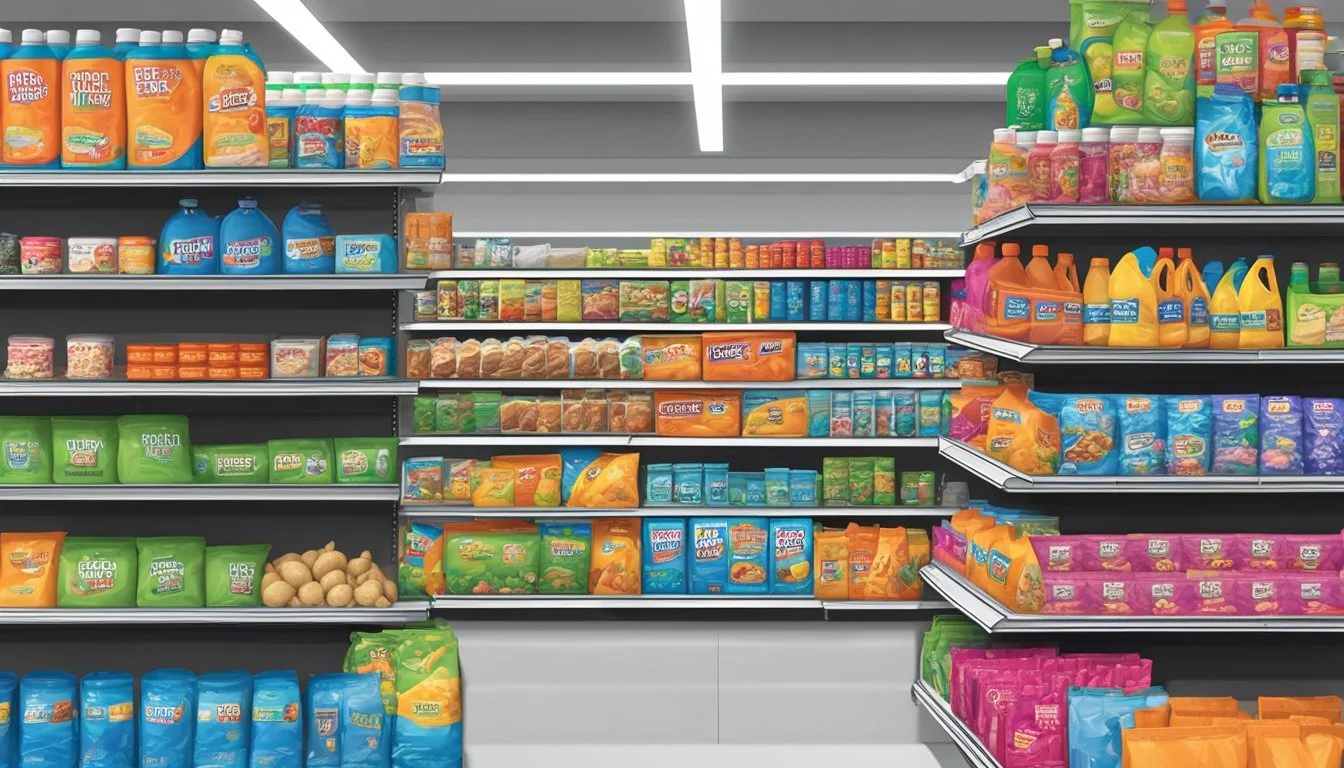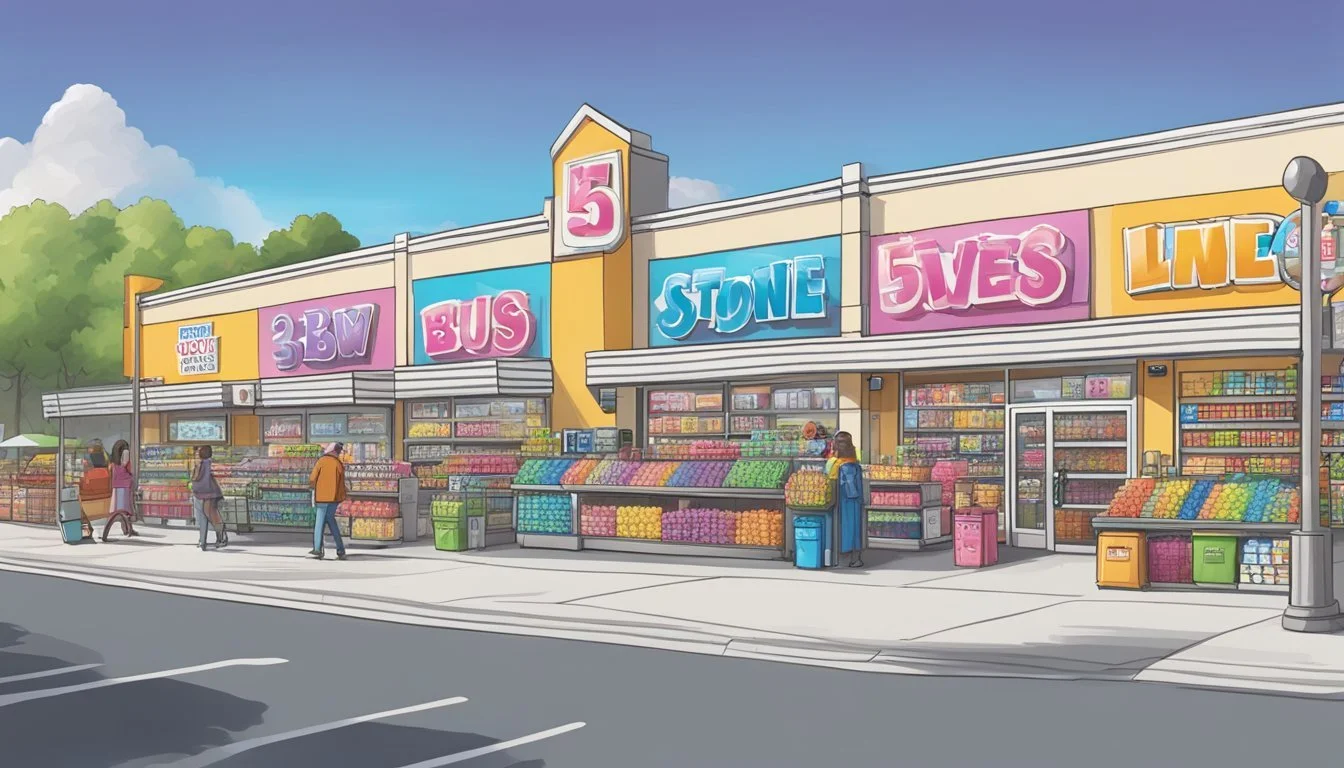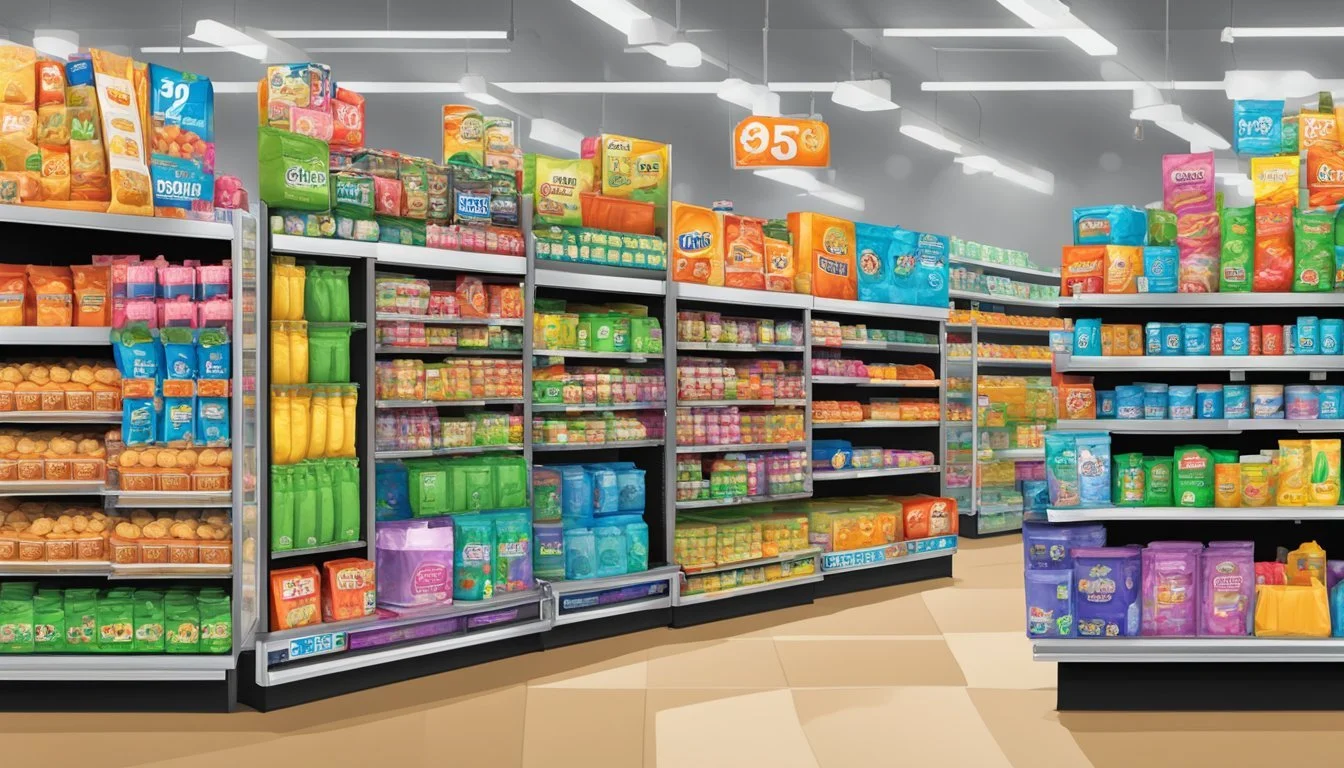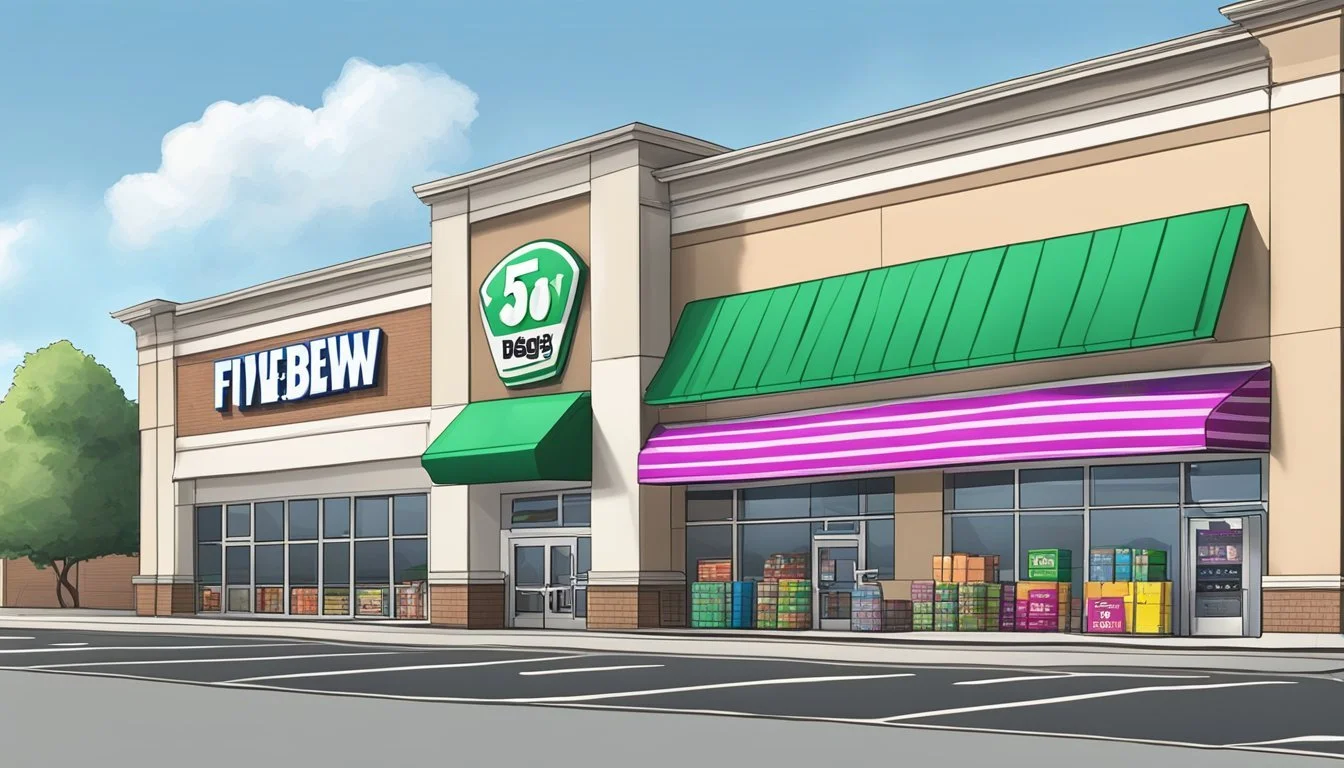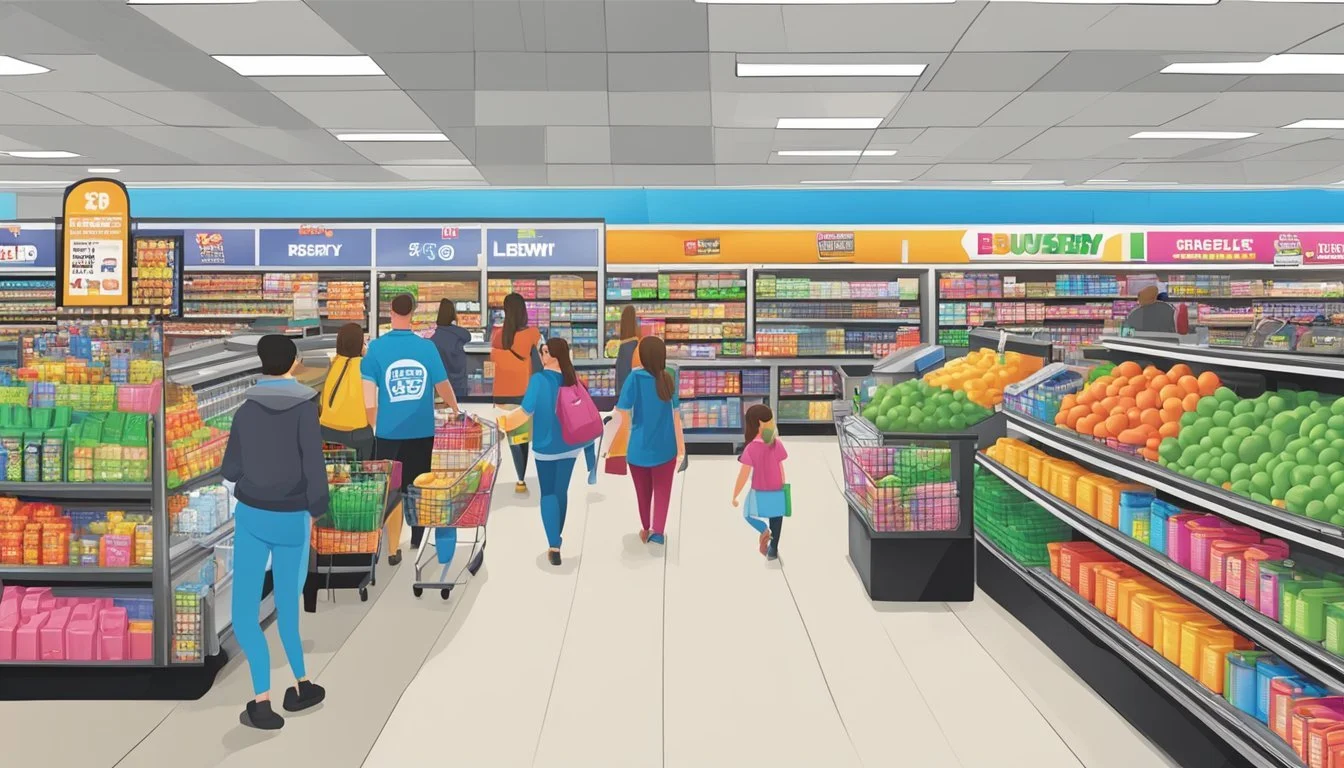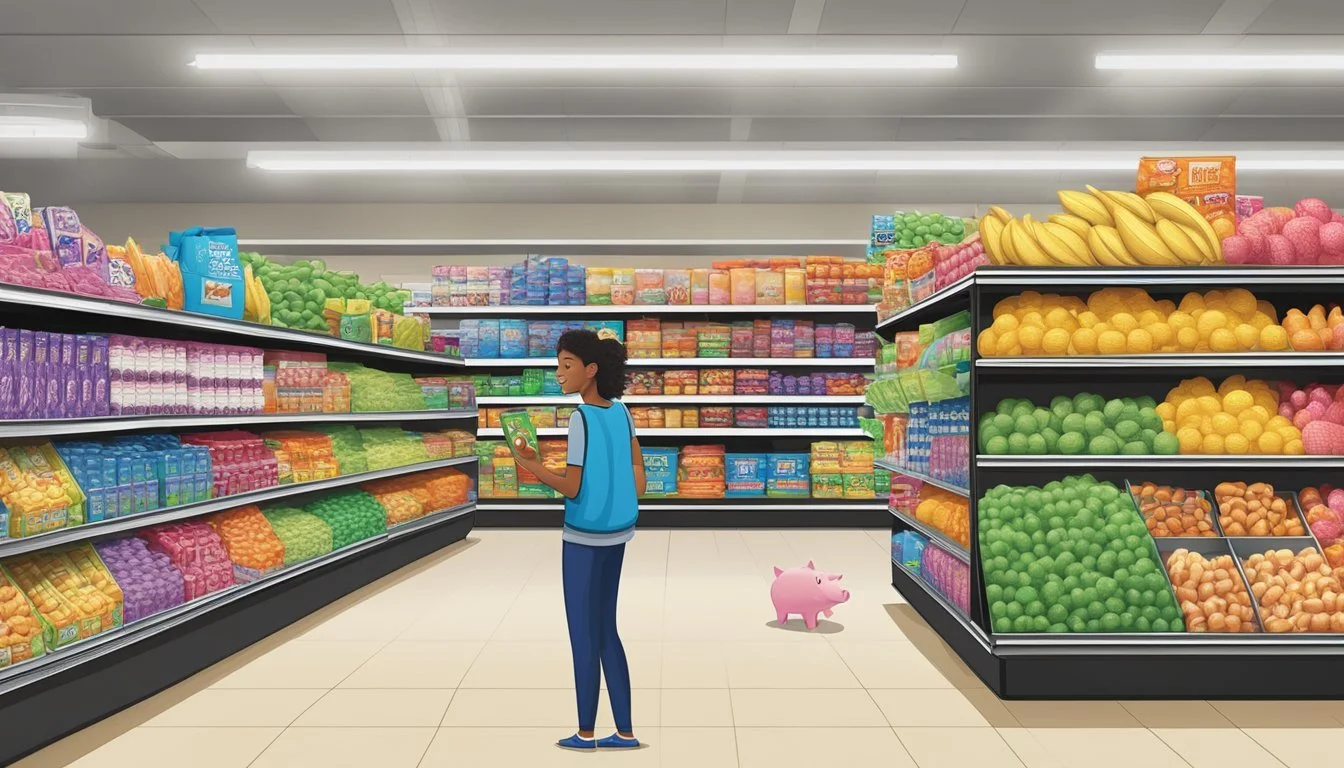Is Five Below Cheaper Than Piggly Wiggly?
A Price Comparison of Two Retail Giants
Five Below and Piggly Wiggly cater to different consumer needs, making a direct price comparison challenging. Five Below specializes in trendy, low-cost items across various categories, while Piggly Wiggly focuses on groceries and household essentials.
Generally, Piggly Wiggly offers more competitive prices on grocery items compared to Five Below. Piggly Wiggly's emphasis on community and customer service, combined with its longstanding presence in the grocery market, allows it to provide value-driven options for budget-conscious shoppers.
While Five Below maintains a consistent $5-or-less price point, Piggly Wiggly's pricing structure varies. Piggly Wiggly often features sales and promotions on everyday grocery items, potentially offering greater savings for those looking to stock their pantries and refrigerators. For non-grocery items, Five Below may present better deals, but for overall grocery shopping, Piggly Wiggly typically provides more comprehensive and cost-effective options.
Understanding Five Below and Piggly Wiggly
Five Below and Piggly Wiggly are two distinct American retail chains with different focuses and histories.
Five Below, founded in 2002, specializes in selling products priced at $5 or less. It targets a younger demographic with trendy items, accessories, and small electronics.
Piggly Wiggly, established in 1916 by Clarence Saunders in Memphis, Tennessee, is a grocery store chain. It revolutionized the retail industry by introducing the self-service shopping concept.
Piggly Wiggly operates primarily in the Southern United States. The chain offers a wide range of groceries, including fresh produce, meats, and household items.
While Five Below focuses on discounted non-food items, Piggly Wiggly provides essential grocery products. Piggly Wiggly stores often feature locally-sourced options and custom meat cuts.
The pricing strategies of these retailers differ significantly. Five Below maintains a strict $5-and-under policy, while Piggly Wiggly's prices vary based on market conditions and product types.
Piggly Wiggly's name origin remains a mystery, adding to its charm and recognition. The chain has built strong community ties in its operating areas.
Both companies have carved unique niches in the retail landscape, catering to different consumer needs and preferences.
Comparing Price Points
Five Below and Piggly Wiggly employ distinct pricing strategies that cater to different consumer needs. Their approaches to pricing structure, deals, and promotions significantly impact overall affordability.
Pricing Structure
Five Below maintains a consistent pricing model, with most items priced at $5 or less. This strategy appeals to budget-conscious shoppers seeking affordable non-grocery items.
Piggly Wiggly, as a grocery chain, offers a wider range of price points. Their focus on groceries means prices can vary based on product type, brand, and market conditions.
Five Below's fixed price structure contrasts with Piggly Wiggly's variable pricing. This difference affects how consumers perceive value when shopping at each store.
Deals and Discounts
Five Below rarely offers additional discounts due to its already low price point. Their business model relies on volume sales rather than markdown events.
Piggly Wiggly, like many grocery stores, frequently provides weekly deals and discounts. These promotions often target staple items and seasonal products.
Shoppers at Piggly Wiggly may find better deals on groceries through these regular promotions. Five Below, however, maintains consistent pricing year-round.
Coupons and Promotions
Five Below's coupon usage is limited. The store occasionally offers percentage-off coupons for purchases over a certain amount, typically during special events or holidays.
Piggly Wiggly embraces a more traditional approach to coupons and promotions. They accept manufacturer coupons and often provide store-specific coupons to loyal customers.
Many Piggly Wiggly locations participate in digital coupon programs, allowing customers to save money through smartphone apps. This tech-savvy approach enhances the shopping experience for price-conscious consumers.
Five Below's promotional strategy focuses on new product introductions rather than price reductions. Their marketing emphasizes value at the standard price point.
Quality and Product Selection
Five Below and Piggly Wiggly offer distinct product ranges that cater to different consumer needs. Their selections vary significantly in terms of quality, variety, and focus areas.
Organic and Fresh Options
Piggly Wiggly provides a more comprehensive grocery selection, including fresh produce and organic items. Their stores typically feature a produce section with locally-sourced fruits and vegetables. Piggly Wiggly also carries organic options to meet growing consumer demand for healthier choices.
Five Below, on the other hand, does not focus on fresh or organic products. As a discount retailer, their inventory primarily consists of non-perishable items and snacks. They do not offer fresh produce or a significant range of organic foods.
Brand Varieties
Piggly Wiggly stocks a wide array of national and store brand products across various categories. Their shelves include popular grocery brands, as well as their own private label offerings. Customers can find a diverse selection of frozen foods, dairy products, and specialty cheeses.
Five Below's brand selection is more limited and focused on novelty items. They carry lesser-known brands and their own exclusive product lines. Their inventory includes snacks, candies, and some packaged foods, but the variety is not as extensive as a traditional grocery store.
Shopping Experience Comparison
Five Below and Piggly Wiggly offer distinct shopping experiences tailored to their target customers. Each store has unique strengths in customer service, layout, and environmental impact.
Customer Service and Support
Five Below employs a youthful staff focused on maintaining a fun atmosphere. Employees are trained to be approachable but generally provide minimal assistance. The stores often have self-checkout options for quick purchases.
Piggly Wiggly prioritizes personalized service. Staff members are typically more experienced and knowledgeable about products. They offer attentive support, especially for customers with specific shopping lists. Piggly Wiggly usually has traditional manned checkout stands.
Both stores provide shopping baskets, but Five Below's are often brightly colored to match their brand aesthetic.
Store Layout and Accessibility
Five Below features a grid layout with wide aisles. Products are organized by price point, with clear signage indicating $1, $3, and $5 sections. The stores are designed for easy navigation and quick browsing.
Piggly Wiggly uses a more traditional grocery store layout. Produce and deli sections are typically located near the entrance. Aisles are arranged by product categories. The layout may vary between locations due to the franchise model.
Five Below stores are usually found in shopping centers, while Piggly Wiggly often serves as a neighborhood grocery store.
Environmental Considerations
Five Below's focus on low-cost items often results in more disposable products. They've made efforts to reduce plastic bag usage but still rely heavily on plastic packaging.
Piggly Wiggly stores generally offer a wider selection of fresh produce and local goods, potentially reducing transportation-related emissions. Some locations have implemented energy-efficient lighting and refrigeration systems.
Both chains have room for improvement in sustainability practices. Five Below could explore more eco-friendly product options, while Piggly Wiggly might expand its bulk food offerings to reduce packaging waste.
Store Locations and Accessibility
Five Below and Piggly Wiggly have distinct regional presences and accessibility patterns across the United States. Their store locations impact customer convenience and shopping experiences.
Regional Presence
Five Below operates over 1,200 stores across 40 states, with a strong presence in the Northeast, Mid-Atlantic, and Midwest regions. The discount chain has expanded rapidly in recent years, opening new locations in major metropolitan areas and suburban shopping centers.
Piggly Wiggly, in contrast, maintains a more concentrated footprint in the American South and parts of the Midwest. The grocery chain has approximately 530 stores across 17 states, with a particularly strong presence in Alabama, Georgia, and South Carolina.
Five Below has made inroads into urban markets like New York City, while Piggly Wiggly tends to focus on smaller towns and rural areas in its core regions.
Urban vs. Rural Accessibility
Five Below targets high-traffic retail corridors in urban and suburban areas, often locating near other popular retailers. Their stores are commonly found in strip malls, power centers, and shopping plazas with ample parking.
Piggly Wiggly emphasizes local accessibility in smaller communities. Many of their stores serve as neighborhood grocers in rural towns and suburban areas where larger chains may not have a presence.
Urban shoppers in major cities are more likely to find a nearby Five Below, while rural residents in the South may have easier access to a Piggly Wiggly. This difference in accessibility reflects each chain's distinct market strategy and target demographics.
Brand and Community Engagement
Five Below and Piggly Wiggly take distinct approaches to brand building and community involvement. Their strategies reflect their unique market positions and target demographics.
Local Involvement and Sponsorships
Piggly Wiggly, founded in Memphis, has deep roots in American communities, particularly in the South and Midwest. The brand actively engages in local sponsorships, supporting youth sports teams, school events, and community festivals. Piggly Wiggly stores often participate in food drives and fundraisers for local charities.
Five Below, while newer to the retail scene, has begun to increase its community presence. The company sponsors back-to-school drives and partners with organizations like Alex's Lemonade Stand Foundation to support childhood cancer research.
Brand Partnerships and Collaborations
Five Below frequently collaborates with popular brands and influencers to create exclusive product lines. These partnerships, often tied to current trends, help boost the brand's appeal among younger consumers. Recent collaborations have included limited-edition merchandise with social media stars and gaming franchises.
Piggly Wiggly focuses on partnerships with local and regional suppliers. This strategy supports local economies and provides customers with familiar, trusted products. The Piggly Wiggly brand also offers its own line of private-label items, competing with national brands on quality and price.
Loyalty Programs and Customer Benefits
Loyalty programs play a key role in retaining customers and offering extra value. Both Five Below and Piggly Wiggly have implemented strategies to reward repeat shoppers and enhance their overall experience.
Rewards and Membership Perks
Five Below does not currently offer a formal loyalty program. The retailer focuses on maintaining consistently low prices across its inventory.
Piggly Wiggly, on the other hand, provides the Pig Card Program. This initiative gives customers extra savings on thousands of grocery items. Shoppers earn points for every dollar spent:
100 points = $1 off
500 points = $5 off
1000 points = $10 off
These points can be redeemed for free grocery items and Piggly Wiggly gift cards. The program automatically enrolls members in the Rewards Club, granting access to exclusive benefits.
Customer Retention Strategies
Five Below relies on its $5-and-below price point as its primary retention strategy. This approach aims to attract budget-conscious shoppers looking for affordable options across various product categories.
Piggly Wiggly employs multiple tactics to keep customers coming back:
Weekly ads featuring special deals
Acceptance of manufacturer coupons
Competitor price matching
Community-focused shopping environment
These strategies create a personalized shopping experience, fostering customer loyalty. Piggly Wiggly's emphasis on local sourcing for produce and meat further strengthens its connection with the community.
Conclusion
Five Below and Piggly Wiggly cater to different consumer needs. Five Below focuses on affordable non-grocery items, while Piggly Wiggly specializes in groceries.
For grocery shoppers on a tight budget, Piggly Wiggly offers competitive prices and local deals. Their community-focused approach may appeal to those seeking personalized service.
Five Below provides inexpensive household items, which can complement a grocery budget. Combining shopping at both stores may help maximize savings.
Creating a meal plan using Piggly Wiggly's offerings can lead to more affordable and healthy eating. Their produce section often features local, fresh options.
Smart shoppers can leverage each store's strengths. Piggly Wiggly for groceries and Five Below for low-cost home goods can contribute to an overall savings strategy.
Ultimately, the choice depends on individual needs. Those prioritizing groceries may find Piggly Wiggly more suitable, while bargain hunters seeking variety might prefer Five Below.
Comparing prices, quality, and selection at both stores can help shoppers make informed decisions that align with their budget and lifestyle goals.

